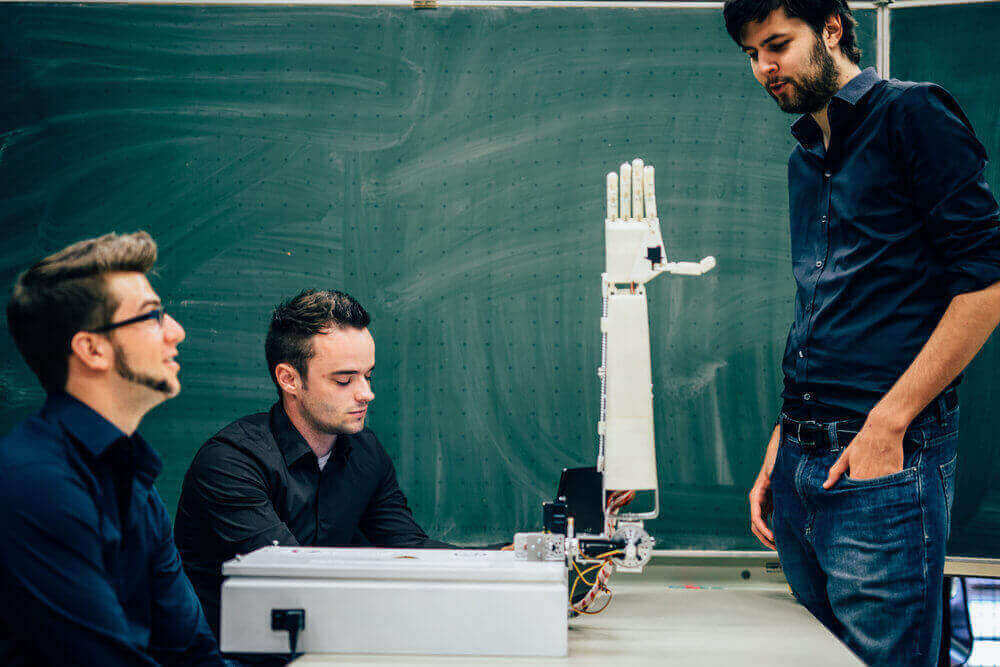Students from the University of Antwerp have invented Project Aslan, a 3D printed sign language robot to address the human skills shortage.
Whether it’s in a school or a hospital, the presence of a qualified sign language translator is a huge benefit for the deaf community. With proper communication channels, it makes all the difference for deaf or hard-of-hearing individuals to receive better care and education.
But while more sign language interpreters are certainly desirable, there are challenges. Becoming fluent in sign language, for example, can take up to five years with American Sign Language (ASL) courses.
Back in 2014, three students at the University of Antwerp noticed that that there was a shortage of sign language interpreters, and the communication gap developing between hearing and deaf communities. The students, Guy Fierens, Stijn Huys and Jasper Slaets, attempted to address the problem using a robot humanoid.
Huys explains:
“I was talking to friends about the shortage of sign language interpreters in Belgium, especially in Flanders for the Flemish sign language. We wanted to do something about it. I also wanted to work on robotics for my masters, so we combined the two.”
Using 3D printing, the engineering students built a humanoid robot that is able to sign. The robot is called Project Aslan — short for Antwerp’s Sign Language Actuating Node. No relation to the lion from Narnia.
The European Institute for Otorhinolaryngology has been sponsoring the project. Now, with the help of 3D Hubs, the hand will also be available in 140 countries.
Project Aslan Bridges the Communication Gap
The project has been under development for the past three years, and is now in its first iteration; it can effectively convert text into sign language.
Printing time for the prototype takes 139 hours due to 25 parts. The students use PLA filament on a desktop 3D printer, which makes it affordable to print. However, the robot also requires components like 16 servo motors, 3 motor controllers, and an Arduino Due.
After printing and acquiring the necessary components, assembly takes around 10 hours. Then once the robot is up and running, it receives information from a local network and begins translating text to sign. Impressively, it can also check for updated sign languages from all over the world.
As 3D printing is now available worldwide, the hope is that this robot can be easily made by anyone who needs it. In addition, broken parts can be quickly replaced with a desktop 3D printer.
Another benefit of the hand is that it could help improve upon sign language courses. The trio are not looking to replace human sign language interpreters. Instead, by using this robot, more people will be able to learn sign language and become translators.
For the next stage of Project Aslan, once the students complete their work to a standard they are happy with, they’ll be making the project open source. That means anyone can download it, use it, and improve upon it. They also plan to add a second hand and an expressive face in future.
Source: 3D Hubs

License: The text of "Project Aslan is a 3D Printed Sign Language Robot" by All3DP is licensed under a Creative Commons Attribution 4.0 International License.